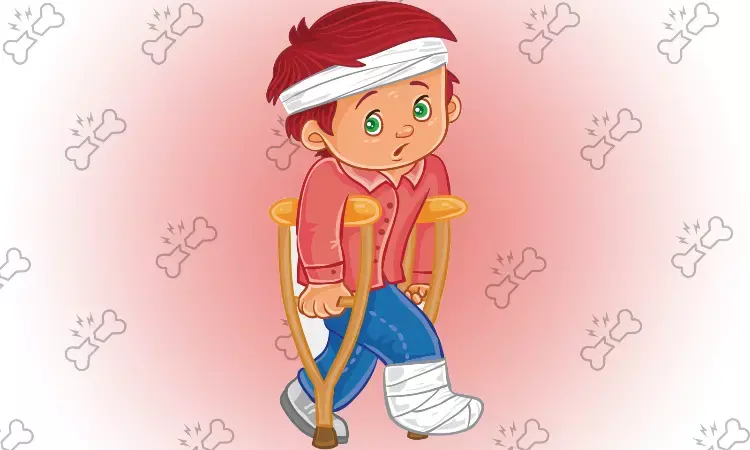- Home
- Medical news & Guidelines
- Anesthesiology
- Cardiology and CTVS
- Critical Care
- Dentistry
- Dermatology
- Diabetes and Endocrinology
- ENT
- Gastroenterology
- Medicine
- Nephrology
- Neurology
- Obstretics-Gynaecology
- Oncology
- Ophthalmology
- Orthopaedics
- Pediatrics-Neonatology
- Psychiatry
- Pulmonology
- Radiology
- Surgery
- Urology
- Laboratory Medicine
- Diet
- Nursing
- Paramedical
- Physiotherapy
- Health news
- Fact Check
- Bone Health Fact Check
- Brain Health Fact Check
- Cancer Related Fact Check
- Child Care Fact Check
- Dental and oral health fact check
- Diabetes and metabolic health fact check
- Diet and Nutrition Fact Check
- Eye and ENT Care Fact Check
- Fitness fact check
- Gut health fact check
- Heart health fact check
- Kidney health fact check
- Medical education fact check
- Men's health fact check
- Respiratory fact check
- Skin and hair care fact check
- Vaccine and Immunization fact check
- Women's health fact check
- AYUSH
- State News
- Andaman and Nicobar Islands
- Andhra Pradesh
- Arunachal Pradesh
- Assam
- Bihar
- Chandigarh
- Chattisgarh
- Dadra and Nagar Haveli
- Daman and Diu
- Delhi
- Goa
- Gujarat
- Haryana
- Himachal Pradesh
- Jammu & Kashmir
- Jharkhand
- Karnataka
- Kerala
- Ladakh
- Lakshadweep
- Madhya Pradesh
- Maharashtra
- Manipur
- Meghalaya
- Mizoram
- Nagaland
- Odisha
- Puducherry
- Punjab
- Rajasthan
- Sikkim
- Tamil Nadu
- Telangana
- Tripura
- Uttar Pradesh
- Uttrakhand
- West Bengal
- Medical Education
- Industry
Novel Intramedullary nail controls axial interfragmentary motion, heals tibial fracture: Study

In the past animal and human studies have demonstrated the benefit of controlled interfragmentary motion on fracture healing. One such study recently published in the Journal of Orthopaedic Research highlighted a novel intramedullary nail capable of controlled axial interfragmentary motion which may potentially enhance fracture healing.
The authors from the Department of Surgery, Creighton University School of Medicine, Phoenix, Arizona, USA quantified interfragmentary motion and load transfer in tibial fractures fixed using a novel intramedullary nail (IMN) that allows controlled axial motion.
A total of fifty composite tibias with various fracture patterns were utilized for the research. For all test conditions, two interlocking screws were used to fix the nail in the proximal metaphysis, and two interlocking screws through the distal metaphysis, explained Navid Ziran, the lead authors of the study.
The nail allowed either no motion (static mode) or 1 mm (dynamic mode) of cyclic axial motion between the two fracture fragments for every fracture pattern tested. As expected, strain shielding was more prominent under static nail conditions.
Moreover, in contrast, specimens tested under dynamic nail conditions transferred axial load between the fracture fragments such that strains near the fracture site were generally similar to those measured on an intact tibia.
It was observed that the maximum shear strains proximal to the fracture were significantly lower in specimens with oblique or butterfly fracture patterns (p < 0.01) compared to intact specimens. This decrease in shear strain indicated that the strain shielding effects were likely present due to the implant.
However, strain shielding appeared to be reduced in tensile and compressive principal strains. Hence, to summarize the authors noted that the novel IMN allowed controlled axial motion between the fragments in a variety of common diaphyseal tibial fracture patterns.
The clinical significance was that this in vitro biomechanical study investigated a novel intramedullary nail capable of controlled axial interfragmentary motion which may potentially enhance fracture healing.
Dr. Nandita Mohan is a practicing pediatric dentist with more than 5 years of clinical work experience. Along with this, she is equally interested in keeping herself up to date about the latest developments in the field of medicine and dentistry which is the driving force for her to be in association with Medical Dialogues. She also has her name attached with many publications; both national and international. She has pursued her BDS from Rajiv Gandhi University of Health Sciences, Bangalore and later went to enter her dream specialty (MDS) in the Department of Pedodontics and Preventive Dentistry from Pt. B.D. Sharma University of Health Sciences. Through all the years of experience, her core interest in learning something new has never stopped. She can be contacted at editorial@medicaldialogues.in. Contact no. 011-43720751
Dr Kamal Kant Kohli-MBBS, DTCD- a chest specialist with more than 30 years of practice and a flair for writing clinical articles, Dr Kamal Kant Kohli joined Medical Dialogues as a Chief Editor of Medical News. Besides writing articles, as an editor, he proofreads and verifies all the medical content published on Medical Dialogues including those coming from journals, studies,medical conferences,guidelines etc. Email: drkohli@medicaldialogues.in. Contact no. 011-43720751


